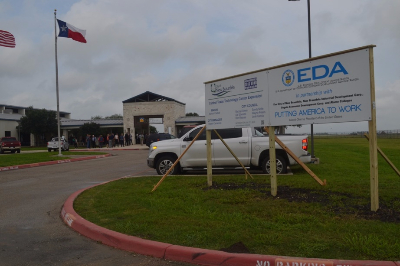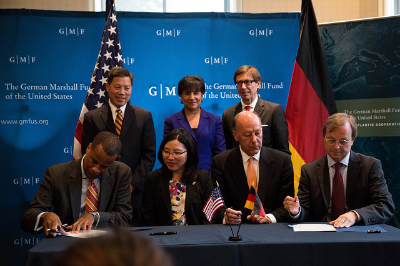Success Story: A Training Center of Their Own

If you create a job and no one has the skills needed to fill it, did you really create a job? Workforce development must be a critical focus of all economic development organizations. It’s imperative that workers receive training that matches the needs of employers. In 2000, the town of New Braunfels, Texas, was faced with a problem. The town wanted to attract new industries, but their existing businesses were expressing concerns about the lack of skilled workers to meet their current and future needs.
Located between San Antonio and Austin, New Braunfels had no education or training facility. Residents looking to attain entry-level skills, increase technical skills or connect to jobs or higher education opportunities had to travel the 30-50 miles to San Antonio or Austin to do so. As a result, the Alamo Community College District joined with officials from the towns of Seguin and New Braunfels to create the Central Texas Technology Center (CTTC).
Highlight: Guest Column - EDA partners with AspenWSI to Accelerate Industry-Driven Workforce and Economic Development Strategies
Cathy Katona
AspenWSI
 |
|
Cathy Katona, AspenWSI |
As America’s economic recovery gathers steam and labor markets tighten, economic development is increasingly driven by the availability of skilled workers. Businesses at all stages, whether they are start-ups, expanding, or relocating, depend on the availability of appropriately trained employees to fill open positions. Economic developers have long been listening to employers say that there is a shortage of skilled workforce. Yet, one also hears of unemployed and underemployed workers unable to find positions that allow them to contribute to the economy.
While businesses are seeking higher-skilled workers, greater productivity, increased competiveness in a global marketplace and higher profits, job seekers and workers are looking for educational opportunities, better wages and benefits, as well as career advancement opportunities. Meeting the needs of both is a regional imperative as we seek to reduce high unemployment and inequality of opportunity as well as create the types of communities that we aspire to live in and that provide opportunities for all.
The White House report, Ready to Work: Job Driven Training and American Opportunity (PDF), published in July 2014, highlights the success of bridging workforce development and economic development through job-driven, or industry-led strategies. In response, federal agencies are aligning their efforts to encourage job-driven workforce development initiatives.
Spotlight: Commerce Signs Agreement with Germany to Coordinate Workforce Development and Apprenticeship Opportunities

In this country, the word “apprentice” may conjure historical images of colonial times – or for some of Mickey Mouse being overrun by brooms in Fantasia. But apprenticeships are a valuable workforce development tool and an opportunity for skilled workers to teach those skills to the next generation. In many European countries, apprenticeships offer an alternative career path to college or university and more academic pursuits.
The Obama Administration recognizes the value of promoting apprenticeships, and on June 5, the U.S. Department of Commerce joined with the U.S. Departments of Education and Labor to sign a memorandum of understanding (MOU) with Germany. The German vocational training system (dual system) is a proven apprenticeship model, and this MOU will help build partnerships with German employers to expand apprenticeships in their U.S. operations.

